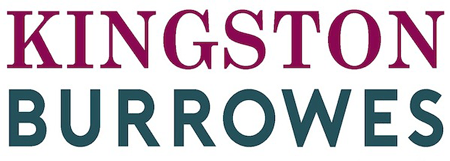When a business incurs expenses, it is either capital or revenue (trading) expenditure. Expenses which are classed as capital expenditure, normally have a lasting benefit for the business (at least longer than a year). Revenue expenses on the other hand, usually relate to repairs, for example repairing machinery or redecoration.
Capital expenditure is not usually deductible from trading profits, and instead a measure of tax relief is received in the form of Capital Allowances. The Government is effectively offering businesses a tax incentive to invest in plant and machinery.
Capital allowances can also be claimed by those who have incurred qualifying capital expenditure on the construction, fit out, refurbishment or acquisition of commercial property within a trade. This includes offices, hotels, restaurants, retail, industrial, mixed use developments and various others.
Is all capital expenditure eligible for capital allowances?
The rule to apply when determining whether capital expenditure is eligible for capital allowances, is that the item must be owned by the company/individual claiming capital allowances. Therefore, not all capital expenditure qualifies for capital allowances. Some examples of expenditure which wouldn’t be eligible are the installation cost of plant/machinery or the demolition costs of a property which is held as a fixed asset.
How are capital allowances claimed?
All capital allowances must be claimed in a tax return as they are not allocated automatically.
There is no time limit on claiming capital allowances, (as long as the asset is still owned and used within the business), but it is advisable to consider them in the early stages on acquiring an asset, to make the most of the tax savings. This is particularly relevant when it comes to acquiring a property or completing a refurbishment project.
It is possible to defer capital allowances in whole or in part (if it is not beneficial to claim all the allowances), but this should be carefully considered, especially if the expenditure is eligible for 100% Annual Investment Allowance.
Capital allowance rates for plant and machinery
Capital allowance rates depend on the type of capital expenditure and the date that it was incurred on.
The writing down allowance that is currently given to general pool allowances is 18%, and the special pool writing down allowance is 6%. The Annual Investment Allowance and First Year Allowances are far more generous, at 100% of a certain limit of expenditure within a year.
Integral features explained
You may have heard ‘Integral features’ being mentioned in relation to capital allowances, and these are simply fixtures and fittings within a building which typically provide a longer lasting use and are harder to remove from the property. Some examples of integral features are lifts, water systems, heating and ventilation systems, electrical lighting and power systems and external solar shading. Integral features are currently eligible for the writing down allowance of 6%.
Integral Features Example
- You have a qualifying integral features asset (for example a lift) with a value of £100,000 in the first tax year.
- You can claim 6% (£6,000) of allowances against this and you then have a balance of £94,000 to carry forward.
- In the second year, you will claim another 6% (£6000), reducing the balance again to £88,000 and the remainder is carried forward. This is repeated until all the allowances are fully utilised or the asset is sold/no longer in use.
Fixtures Explained
Fixtures are not the same as integral features because they are a type of plant and machinery that has been installed/fixed in a property and become part of the building. Once the property has been sold, ownership of those fixtures passes to the new owner.
Annual Investment Allowance Explained
The Annual Investment Allowance (AIA) provides 100% tax relief on qualifying plant and machinery up to a set expenditure limit within a year.
It is up to the business/individual as to how they allocate the AIA. The most logical choice would be to first allocate it to Integral Features as this provides the fastest tax relief.
AIA is available to all businesses but only one AIA is available each year. Sole traders are also eligible for AIA as well as partnerships where all members are individuals.
No AIA is available for plant and machinery acquired from ‘connected persons’ or for assets brought into use which had been previously owned by the company/person and used for other reasons.
The Annual Investment Allowance is also time apportioned if an accounting period is more or less than 12 months.
The current annual investment amounts is £1 million.
Bear in mind, that if an asset which qualifies for Capital Allowances is purchased but AIA has been fully used then the expenditure is treated under the standard capital allowance rules and will receive a writing down allowance of either 8% or 6%.
What are First Year Allowances?
100% tax relief is available for qualifying plant and machinery in the accounting period in which the expenditure has occurred. This is termed a First Year Allowance (FYA) and includes the following types of expenditure:
- Electric Vehicle charging points
- Zero emission goods and vehicles
- Cars with certain C02 emissions
- Enhanced Capital Allowances (ECAs) – energy efficient plant and machinery which qualifies according to the Government’s Energy Technology list. (ECAs ended in April 2020, but retrospective claims can still be made)
However, unlike writing down allowances, if the accounting period is longer/shorter than 12 months, FYAs are not time apportioned.
How to claim capital allowances on investment property?
You can only claim capital allowances for plant and machinery in a commercial investment property or a residential investment property, which is a serviced apartment or qualifies as a furnished holiday let. However, where an investment property has plant and machinery within the communal areas, it is possible to claim capital allowances. Common examples in this case would be an apartment block with lifts, carpets, lighting and fire alarm installations in its corridors and communal areas.
Can capital allowances be carried back/forward?
Capital allowances cannot be carried back but if the result of claiming capital allowances creates a trading loss, that loss can be carried back to the previous 12 months of trade, assuming the business was profitable.
It is also possible to amend a previous year’s tax return and submit a capital allowance claim (if it is within the time limit to amend).
Additionally, any post April 2017 losses, can be carried forward and off set against future trading profits.
Selling Assets on which you had claimed Capital Allowances
If you have claimed capital allowances on movable assets (for example furniture) you would need to record a disposal value against the sale of the asset.
Likewise, if you have claimed capital allowances on fixed assets within a commercial property (for example an electrical installation), you are must to record a disposal value against the sale of the commercial property. Unlike moveable assets, as the seller of fixed plant and machinery, you can agree a CAA 2001 s198 tax election. The tax election will enable you to agree a disposal value figure between the original cost of the fixed plant and machinery and a minimum of £1. This function allows you to retain the capital allowances claimed on fixed plant and machinery on sale of a commercial property.
Depreciation vs Capital Allowances
Capital allowances are effectively a tax-deductible version of depreciation.
Depreciation is simply an accounting adjustment which recognises the decrease in the value of an asset over time due to wear and tear and obsolescence. Depreciation is non-deductible for tax purposes.
Structures and Buildings Allowances (SBAs)
Introduced as part of the Finance Act 2019, SBAs provide tax relief on a straight line basis of 3% for expenditure (excluding general pool, special rate pool and revenue expenditure) incurred on commercial property construction contracts awarded on or after 29 October 2018.
SBA allowances can be claimed on works including structures, walls and ceilings etc. where previously no tax relief could be claimed.
Note, that SBA’s are not available on residential premises and this includes dwellings, student accommodation, aparthotels and prisons.
Additionally, if SBA’s are claimed, there will be a deduction in the base cost of the amount claimed for Capital Gains purposes should a property be sold as an asset. As a result, the amount of Capital Gains to be paid will increase.
Calculating Capital Allowances
Capital allowances provide a valuable source of tax savings which are often overlooked, particularly when it comes to the purchase or sale of property.
What’s more, the calculations involved can be complex, particularly if any information is missing. This is where a capital allowances specialist can provide invaluable support to arrive at the correct calculations, ensuring that you have maximised the available tax savings.
At Kingston Burrowes, our tax specialists have the knowledge and experience required to support you in this area. Get in touch with our team to find out how we can help.




